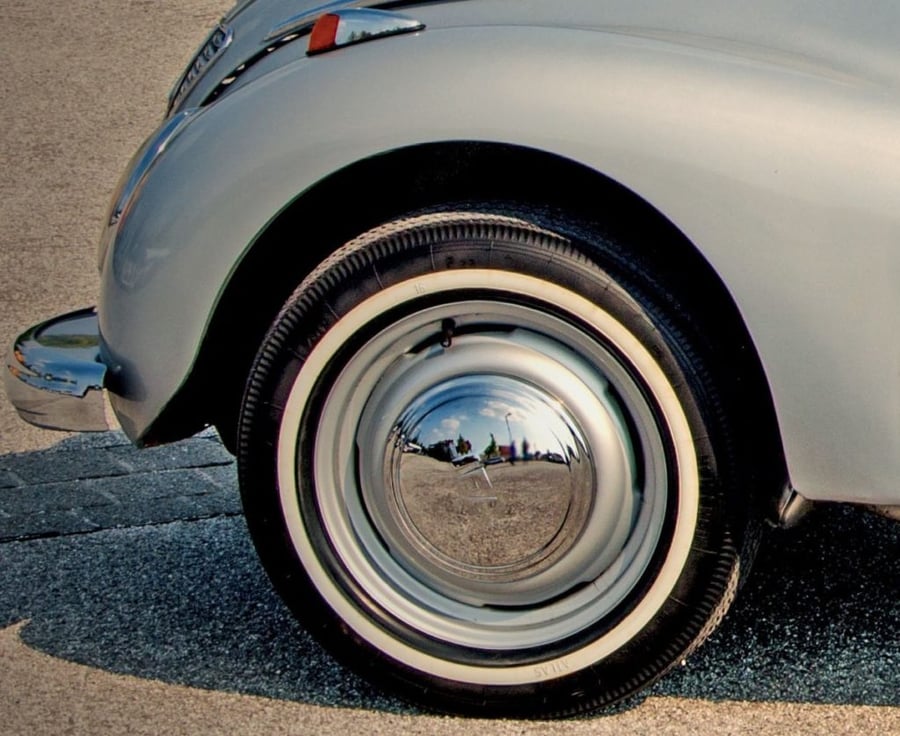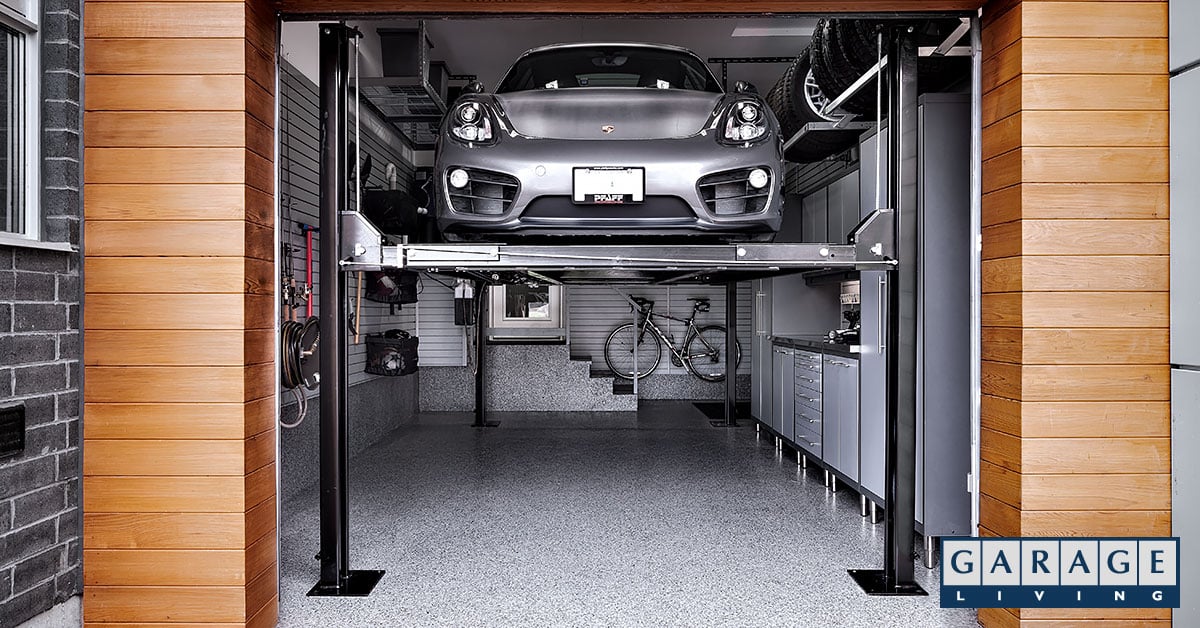As the warm weather gives way to the next several months of cold and snowy conditions, auto enthusiasts lament the changing of seasons as much as anybody.
That’s because months-long stretches of lousy weather mean sports car and classic car owners will need to store their vehicles until spring. After all, snow and rain, road salt, sub-zero temperatures, and slippery roads aren’t exactly ideal conditions to expose your prized ride to.
The importance of proper winter car storage
Proper winter car storage for your seasonal vehicle is essential for a few reasons:
- it extends the life of the vehicle
- you’ll avoid costly repairs
- the vehicle will be better-prepared to be driven again in the spring
You’ll find plenty of classic car restoration experts who believe that improper winter car storage can actually be worse for the vehicle than if it had been driven all winter on salt-covered roads.
If you haven’t gotten around to taking care of your winter car storage needs yet, don’t procrastinate much longer. These 11 winter car storage tips will keep your prized vehicle in pristine condition in your garage until spring time.

1. Wash your car’s exterior
It’s imperative that your vehicle is thoroughly washed before storing it for the winter. Don’t use a drive-through car wash – be sure to hand wash it. Give the car’s underside a good spray wash as well.
Once the car has air-dried, give it a good waxing to protect the vehicle’s finish. It doesn’t hurt to give the car’s chrome a polish, either. Once this step and some of the other winter car storage recommendations below are done, you’ll be covering the car with a cover or tarp.
When the time for winter car storage ends in the spring, your cherished vehicle’s exterior will be fresh and well-preserved during its resting period.
2. Clean your car’s interior
If you’re going to the trouble of following the proper procedures for winter car storage, it’s clear you love your classic car or sports car. Therefore, it’s unlikely you’ve left your beloved car’s interior filled with garbage.
Even still, it bears mentioning that you should ensure your car’s interior is clean before storing it. Anything food-related (including food wrappers) definitely needs to be removed. This lowers the chance of any pests trying to get inside your car and you also won’t have any unpleasant odors to face after months of winter car storage.
Seat covers are a smart idea for providing extra protection for your upholstery. And it’s also a good idea to add some packs of desiccant (like the silica gel that comes in boxes of new shoes) inside the vehicle. They can be bought at your local dollar store and will absorb extra cabin moisture.
3. Keep the critters away
Critters like mice will be drawn to your stored vehicle, which can provide a comfortable winter home for them if you’re not careful.
If you’re aware of issues with mice in your garage, try and resolve the problem before winter arrives. And if they continue to be a persistent problem, take a few steps to protect your vehicle.
Use mouse traps outside the vehicle (never inside) or wherever you notice critter activity in your garage. Mouse traps are reusable and provide visual proof that you’ve caught one of the pests. The effects of mouse and rat poisons, on the other hand, don’t leave evidence as readily. You also won’t want to use them if you have pets.
Be sure that all air inlets are closed in the car and put steel wool in the air filter box’s intake duct. Check under your hood periodically during the winter to make sure it’s critter-free. Also, plug up your exhaust pipe with steel wool to prevent critter access.
4. Fill ’er up before winter car storage
When it comes to winter car storage advice, you’ll find plenty of conflicting opinions online on a few different issues. One of those is whether or not to empty your gas tank or fill it up before winter car storage.
Those in favor of emptying the fuel believe this prevents varnish and gum buildup. Unfortunately, it’s tricky to drain a gas tank without leaving behind moisture that can cause rust.
There’s a stronger consensus for filling up your tank (which prevents moisture buildup) and adding a fuel stabilizer. Gasoline stabilizers prevent the fuel from deteriorating, which causes oxidation and deposits to form that could damage your fuel system.
Just add the recommended amount of fuel stabilizer and let it mix thoroughly with the gas by driving the car for approximately 10-15 minutes. Another reason to keep gas in your vehicle while it’s stored is so you can run it every few weeks (more on that below).
5. Change your oil and filter
It’s wise to change the oil and filter on your sports car or classic car before storing it for the winter. Even if the vehicle isn’t due for either of these maintenance tasks, it’s a good proactive step to take.
An oil change provides helpful corrosion protection, especially since an idle car is more susceptible to engine corrosion. Just as with the fuel stabilizer or any other added car fluids, run the vehicle for a few minutes to circulate the fresh fluids.
6. Top off your coolant
Check your coolant level and top it off if needed (coolant, by the way, is the same as antifreeze). Avoid mixing regular coolant (which is typically a green color) with longer-lasting yellow and red-colored coolants, as they’re formulated to have different lifespans.
To be extra safe, you should check the coolant’s strength to ensure the water concentration level isn’t too high. If it is, this can cause the car’s cylinder heads or engine block to crack.
7. Use proper tire care
When it comes to tire care for a vehicle you’re storing, there’s a few universally accepted facts:
- tires should always be cleaned to remove dirt and brake dust before winter car storage
- tires on a stored vehicle should be inflated to the recommended psi
- long-term winter car storage can cause tires to flat-spot
Flat-spotting happens when the circumference of tires on a car that’s been left in the same spot for a long time changes due to the weight of the vehicle pressing down on them.
Underinflated tires and storage in a cold garage on a car that doesn’t get moved for several months will increase the chance of flat-spotting. Driving the car for awhile can sometimes cause the flat-spots to round out, but not always.
You can prevent flat-spotting by putting your vehicle on jack stands to reduce the weight put on your tires during winter car storage. Place a small piece of wood under the stands. That ensures they won’t leave indentations on your floor, especially if you’ve recently had a spiffy new Floortex™ garage floor coating applied.

8. Disconnect your car battery or use a trickle charger
Unless you’re planning on occasionally starting your stored car during the winter, it’s a good idea to remove the vehicle’s battery. If a car battery loses its charge it may freeze, at which point it becomes useless.
Store it in your heated living space and the battery should be good to go when it’s hooked back up in the spring. Be aware that battery removal isn’t recommended if the car being stored is newer and has engine computers.
Your other option is to hook your car battery up to a trickle charger or battery maintainer. Ensure the model you purchase has an auto shut-off feature to prevent overcharging. As an added dose of preventative maintenance, you can also coat the battery terminals with petroleum jelly.
9. Occasionally start your car…or not
One long-running debate concerning winter car storage is whether or not you should start it every few weeks. Those who don’t think this is necessary believe that if you’ve taken the proper steps to store your car properly, there’s no need to run it during the winter.
There seems to be a more widely-held belief, however, that it is a good idea to start your stored car every 3-4 weeks. Those in favor believe this keeps the cylinders lubricated and removes moisture from operating components. If you’re able to move your car (even just back and forth a few feet), this also prevents brakes and clutches from sticking.
If you do decide to start your vehicle during winter car storage, just remember to do these four things:
- always remove your car cover when it’s running
- remember to remove (and put back) anything you were using to keep critters out of your car
- run your car for about 10-15 minutes until it reaches its optimal operating temperature
- leave your garage door open while your car is running
10. Cover your car
One of your last steps when it comes to winter car storage will be to cover your vehicle. This will protect the exterior you just waxed and keep dirt and dust off of it. If possible, spend the extra money for a custom-fit cover for your car as opposed to getting a universal-fit cover.
Make sure the car cover you use has breathable fabric. Moisture trapped underneath your cover will be harmful to your car’s body. And never use a plastic car cover – they trap rust-causing moisture and can also scratch your car’s finish.

A car lift is ideal for storing your prized sports car or classic car during the winter.
11. Use a car lift for winter car storage
Using your garage during the winter to protect your everyday use vehicles from snow and ice is just one of many benefits of using your garage for parking. Storing your classic car or sports car during the winter in your garage can be an issue if you lack parking space.
One way to increase your garage’s parking space is to add a 4 post car lift to it. They’re a great solution that will protect your prized vehicle and also make room for your other vehicles.
Once all your winter car storage preparation is finished, simply raise your vehicle on the car lift and you’ll then be able to use the space beneath it for parking.
It’s easy and safe to operate the car lift if you need to run your stored car every few weeks. And a car lift is also handy if you prefer taking care of your classic car’s maintenance yourself, as it allows for easy access to a vehicle’s underside.
Make space in your garage for winter car storage
Yes, it can be a lot of work getting your vehicle ready for winter car storage, but your cherished ride deserves it. And when you take it out for that first invigorating drive in the spring time, you’ll be reminded all over again why putting so much tender loving care into your hobby was worth it.
Do you need better garage organization and storage solutions to make space for the winter storage of your prized vehicle? If so, schedule your free consultation with one of our design experts.